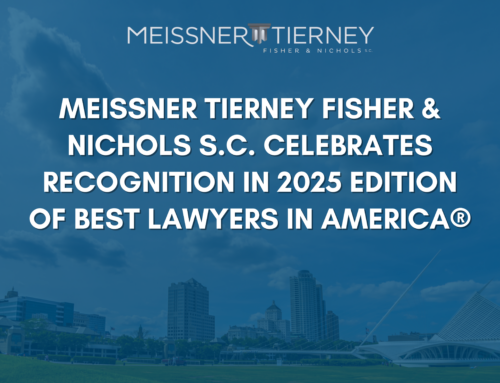It is beyond dispute that artificial intelligence (“AI”) is prompting technological innovation in many areas of commerce and life in ways that, until recently, could only be considered unimaginable. AI has rapidly advanced from traditional AI systems that rely on explicit human-created programming rules–for example, binary statements that guide a system’s decisions (e.g., does a blood test indicate anemia)–to what has become known as “generative AI,” which involves the development of computer-based systems capable of generating original and creative content, such as images, music, text, and videos. Generative AI content is increasingly being used as a substitute for human work.
Generative AI relies heavily on massive amounts of data from a wide range of sources for AI system learning purposes, often including the use of information owned by others. The rapidly increasing use of generative AI content raises significant questions about who or what (if anybody or anything) owns such content, as well as issues about the protection of data from which AI-generated content is created. The same issues present themselves in the context of the algorithms, models, and creations produced by AI systems. It is not an overstatement to say that generative AI presents unique and as-yet unresolved challenges to existing intellectual property concepts, particularly in the area of copyright law.
First, the U.S. Copyright Office currently does not recognize AI programs as “authors” of copyrightable works on the grounds that the plain language of the U.S. Copyright Act requires that the creator of a copyrighted work be human[1]. The U.S. Patent and Trademark Office and courts have also taken a similar position as to the patentability of AI programs on similar grounds, i.e., that a human inventor is required for a patent[2]. To date, neither Congress nor courts have dispositively considered the implications of AI for authorship or inventorship.
The fact that AI generates works independently of human input disrupts this premise of human authorship which underlies current IP legal frameworks, which raises difficult questions as to how to apply current law in the AI context. For instance, should AI itself be recognized as an author for purposes of copyright? If AI cannot be recognized, who, if anyone, should be considered the author of an AI-generated work?
A second major challenge lies in the unresolved issue of whether training an AI system on copyrighted material to create generative AI text, images, videos, and other AI content constitutes copyright infringement. AI machine systems require the accumulation of data, often derived from copyrighted materials. The law remains unresolved over whether this use of copyrighted data amounts to copyright infringement, or whether it can be considered fair use under existing copyright law in the same way that humans use non-AI generated copyright-protected works so long as the statutory requirements for fair use are met or the permission of the copyright owner is otherwise obtained.
Third, the prolific dissemination of generative AI content creates complications in the enforcement of IP rights, because AI makes it easier to rapidly create, distribute, and even counterfeit digital content. Here again, current legal constructs are insufficient to effectively protect and enforce IP rights in response to the proliferation of generative AI content, requiring the development of more advanced resources and methods to identify infringement.
Each of these issues illustrates why legislative measures are needed to update current copyright and related IP laws to address the challenges presented by AI and AI-generated content. As a start, potential legal reforms should clarify current copyright law ambiguities by recognizing AI, given its capacity to create and innovate independently, as a non-human author for purposes of copyright law. Such reform might include revisions to the law that allow for the use of copyrighted materials for AI training, under specified circumstances, as fair use or other similar legal construct.
As for enforcement, new laws will be needed that evolve with developing technologies. Congress and regulatory agencies will have to consider ways to encourage the development of AI-powered detection tools to monitor and identify violations of IP rights.
While legislators and courts grapple with these questions of how AI fits into the current IP law framework, business enterprises will in the meantime encounter real-life situations that require particular attention until the law catches up with commercial realities. As an example, before using AI-generated content, commercial enterprises should review the AI provider’s terms of service and privacy policies to confirm whether the provider’s models were trained with copyrighted content and whether its training data, software, etc., were properly licensed or otherwise lawfully used. As another example, creators of content should, if posting such content on websites and social media platforms, apply for copyright registrations for their content, as appropriate, and include in their terms of use prohibitions against extracting data from the website or other platforms. As yet another example, in contracts with vendors, co-venturers, etc., where generative AI might be used, consideration should be given to including provisions requiring that any use of AI be disclosed and/or unlicensed content prohibited, and indemnification provided for IP infringement caused by the use of AI content generated from unlicensed or unlawfully obtained data.
In all events, the task of addressing, from a legal perspective, the rapid development of AI technologies will require a balance between protecting human authors and fostering AI innovation. Recognizing AI as a non-human author or inventor under the current copyright law framework may solve the above-described ambiguities regarding ownership and could spur further AI development. However, inventors using AI may face competition and even resistance from human IP owners compelled to protect and enforce their rights.
Overall, the future of AI and IP law is continuously evolving, and issues regarding how to incorporate AI into the existing IP law framework raise difficult questions that test the boundaries of existing legal constructs. Flexible and adaptive legal frameworks will be required that can keep pace with rapid technological advancements, and protect the rights of human creators, while also encouraging AI innovation. How these competing considerations are reconciled will play a key role in shaping the future of creative enterprise and invention.
[1] See, Copyright Registration Guidance: Works Containing Material Generated by Artificial Intelligence, 88 Fed. Reg 16,190 (March 16, 2023).
[2] See, Thaler v. Vidal, 43 F.4th 1207 (Fed. Cir. 2022), cert. denied (U.S., April 24, 2023).






